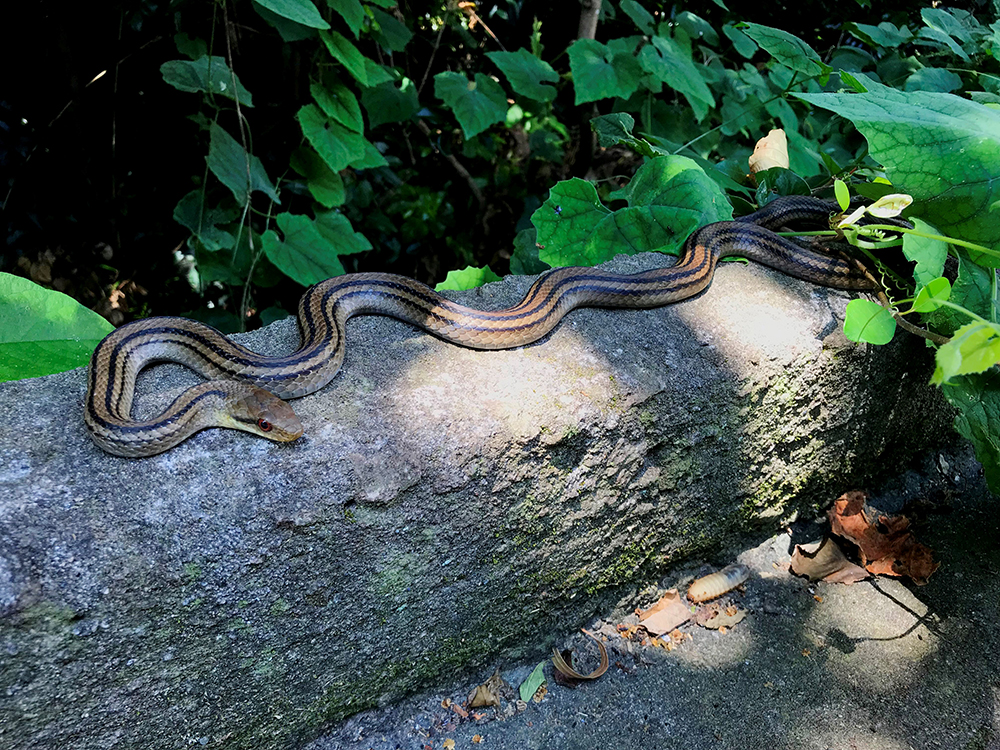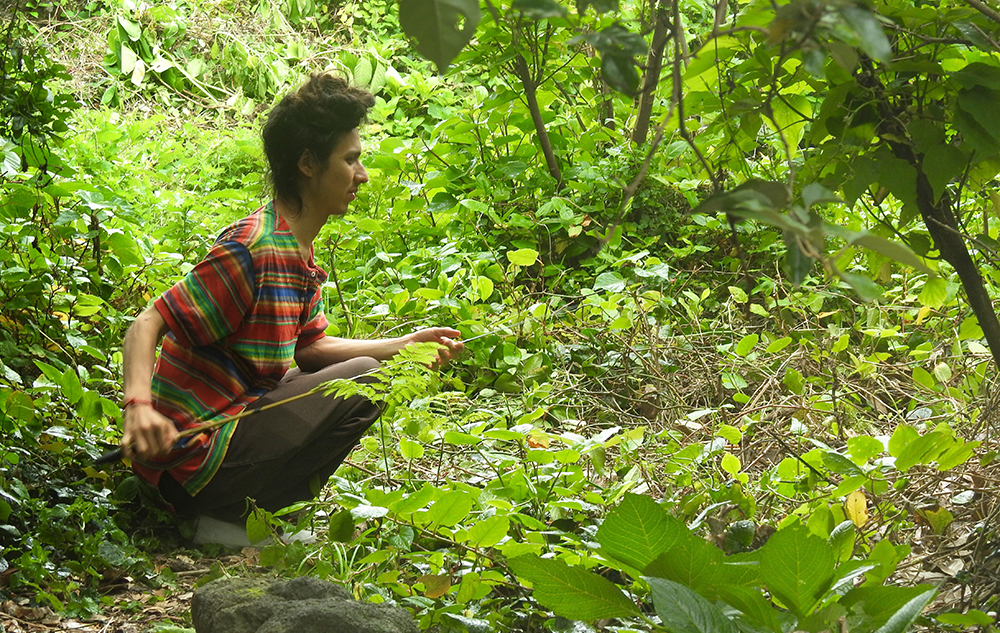November 2021 | Volume 23 No. 1
Leapin’ Lizards
(Courtesy of Masami Hasegawa)
A 40-year study, begun on the Izu Islands in the early 1980s, has shed light on how lizards preyed upon by snakes are active at higher body temperatures than lizards living on islands with no snakes. The study also found significant climatic warming through the 40 years and that lizard body temperatures had increased accordingly. This suggests firstly that lizard thermal biology is highly dependent on predation pressures and secondly that such ectothermic predator-prey relationships may be changing under climatic warming. In short, the lizards predated by snakes can run at higher temperatures, thereby eluding the snakes.
Unusually, the study has been ongoing for four decades, and was begun by Professor Masami Hasegawa of Toho University’s Department of Biology in Japan. He was joined more recently by Dr Félix Landry Yuan, then a PhD student from HKU’s Research Division for Ecology and Biodiversity in the Faculty of Science, and PhD candidate Shun Ito from Tohoku University’s Graduate School of Life Sciences. Their research was supervised by Professor Hasegawa and HKU’s Dr Timothy Bonebrake.
Said Dr Landry Yuan: “I first reached out to Professor Hasegawa near the end of my MPhil studies in 2015 to discuss potential PhD projects regarding prey-predator relationships between lizards and snakes on the Izu Islands. After many years of planning, I officially began collecting data with Professor Hasegawa in 2018 as a part of my PhD studies.”
In addition to measuring body temperature in 2018 and 2019, Dr Landry Yuan’s research included racing lizards down a portable racetrack to measure the speed at which they ran at different temperatures.
“The idea for a portable racetrack came about as a solution to conveniently measure sprint speeds in the field, without having to bring lizards back to a laboratory,” said Dr Landry Yuan. “Getting lizards to race is easy and requires very little convincing. I would simply place an individual at the mouth of the racetrack for it to instinctively run forward.”
The team analysed the thermally-dependent running speeds of more than 150 lizards across the islands, and established how predation by snakes affected lizard thermal biology. They also considered the likely consequences for their fitness.
Dr Landry Yuan found that optimal temperatures were higher for lizards on snake-inhabited islands, while Shun Ito discovered differences in the lizards’ hind legs length that may also improve their chances for survival. They concluded that higher body temperatures and morphological differences help the lizards run faster and better escape the snakes.

A Japanese four-lined rat snake (Elaphe quadrivirgata) on Kozu Island.
Ectotherms and environment
“The lizards are ectotherms,” said Dr Landry Yuan, “which means their body temperatures follow the environment. As ectotherms, their bodily functions, including running, are therefore also dependent on body temperatures. In this way, higher body temperatures allow for better performance, but only up to an optimal peak, after which hotter temperatures actually decrease performance.
“Since snakes are ectotherms, just like lizards, they depend on environmental temperatures to regulate their bodily functions. For lizard populations having no exposure to snake predators, the body temperatures they prefer could be similar to that of snakes. With snakes present on some islands, the lizards there would presumably have adapted by choosing warmer temperatures to avoid the same temperatures sought by snakes.
“This has important implications because lizards on snake islands are already adapted to hotter temperatures, so the ways in which they are going to be affected by further climate change should be different than for lizards on snake-free islands.”
The Izus are a group of volcanic islands stretching south and east from the Izu Peninsula of Honshū, Japan, and part of Tokyo prefecture. They are a model island system and have been compared to Galapagos for the unique research properties they offer. In addition to Professor Hasegawa’s lizard and snake surveillance across the islands every year, some are important nesting sites for threatened bird species, as well as crucial research sites for marine systems.
“With a low number of reptile species, we can explore the direct, evolutionary impact of predation by one snake species on one lizard species without the complexities of multiple predators, prey or competitors,” said Dr Landry Yuan.
“I mainly measured lizard sprint speeds on Kozu and Hachijo-Kojima Islands. I measured lizard body temperatures on those two islands, as well as Niijima. Professor Hasegawa had also previously collected data on those islands, as well as Miyake, Mikura, Oshima and Toshima. Of these islands, snakes live on Kozu, Mikura, Oshima, Niijima and Toshima, while Hachijo-Kojima and Miyake are free of snakes.”
“This was a really fun and insightful collaboration between HKU and Toho University,” Dr Bonebrake noted. “By combining our expertise in global change biology, predator-prey interactions, and island biogeography, the work demonstrated how all of these things can come together in novel ways.”
Dr Landry Yuan concluded: “This is, as far as I am aware, one of the few studies explicitly outlining the effect of predation by a snake on the thermal adaption of a prey lizard. With our data also showing changes in lizard body temperatures with climate change over the course of the past four decades, our research has significant implications for our understanding of how prey-predator relationships could affect ectotherm species’ response to future climate change.”

Dr Félix Landry Yuan searching for lizards on Hachijo-Kojima Island.
(Courtesy of Masami Hasegawa)
This has important implications because lizards on snake islands are already adapted to hotter temperatures, so the ways in which they are going to be affected by further climate change should be different than for lizards on snake-free islands.

DR FÉLIX LANDRY YUAN

